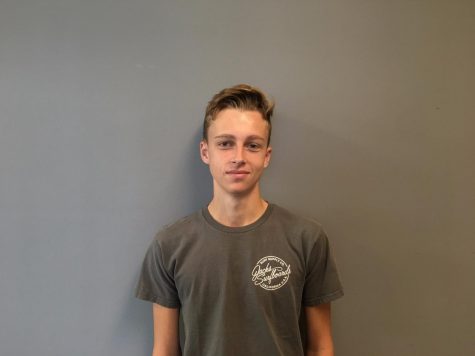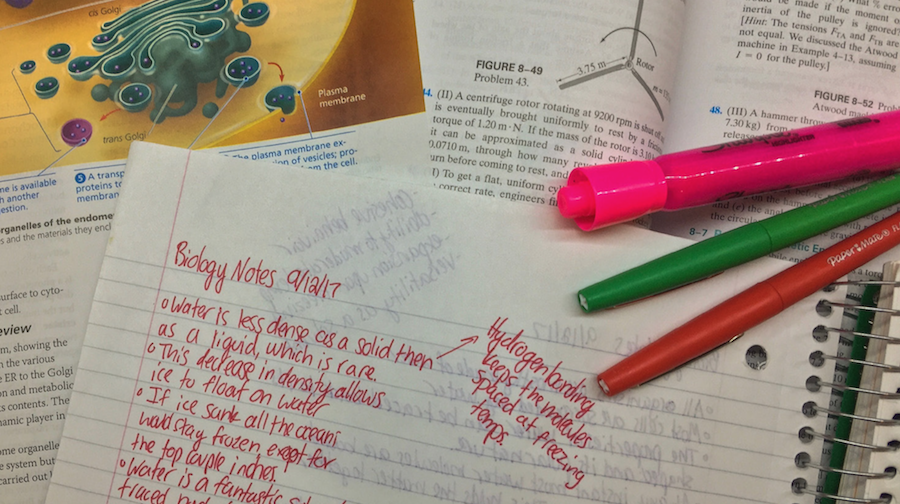A New Program in the Upper School
How the Science Program is Changing to Better Prepare Students for a Future in STEM
Photo credit: Jack Maling
Taking notes is an examples of science homework given each night.
Over the past couple of years, Parker has begun a concerted effort to revamp its Science, Technology, Engineering, and Mathematics programs (STEM). According to the International Society of Automation, STEM is becoming a huge part of a 21st century education, and more important in preparing kids to enter well-paying fields. According to Heads of the Science Department Kara Schupp and Elizabeth Druger, Parker has changed its STEM programs to better prepare its students for brighter futures in those fields.
As Parker began to assess the science program over five years ago, they brought in Norm and Judy Lederman, two Science Education Researchers from the Illinois Institute of Technology, who interviewed students and administrators, took surveys, collected data, and helped advise changes to the program. Along with the Ledermans and the science department as a whole, the lower, middle, and upper schools in conjunction with the administration, helped bring about the changes the programs has experienced in the past years.
According to Schupp and Druger, by introducing changes like a new type leveling between classes, as well as topics courses, such as Advanced Topics in Biology, Parker hopes to give its students more educational freedom while also increasing the rigor of certain classes.
“I don’t like the answer ‘Because that’s the way we’ve always done it,’” Druger said. “ That’s not a progressive answer.” In order for a department to stay at the head of the pack, it has to constantly update its practices to reflect the best of what it can offer. This was the main idea behind the fundamental changes in the Science programs. Besides being a key part of progressive education, change is a key factor in science. New discoveries are constantly being made, and educators within the school decided it was important to reflect that.
Five years ago, Parker began to track its science and math courses, giving options for students to seek accelerated courses of study at a more intense pace. According to Druger and Schupp, by tracking science and math courses, students are able to further challenge themselves appropriately, and teachers and administrators were given a clearer picture of where students were in their education.
A few years ago Parker instituted a pilot program in which a group of students were chosen to delay freshman biology until junior year, taking chemistry freshman year instead, and physics sophomore year. Hoping to further challenge students, this program revealed that in order to make something like this feasible, it was going to require better alignment with the math program in order to fully prepare students for higher level science classes. The pilot continued for two years, ending this past year in favor of a new system, after the Science Department decided students required a higher level of math than what was available at the sophomore level to take physics as a sophomore.
This new program embodies some of Parker’s core values while providing a science education that is rigorous and thorough. According to Druger and Schupp, this new program aims to give students more options, challenge them appropriately, all while staying aligned with the math program to keep students fully prepared for whatever they may face in their future endeavours.
In the United States, the job market has shown a massive need for people with degrees in STEM fields. For those tasked with preparing people for these jobs, this means crafting a suitable education. According to the 2016 ACT College and Career Readiness Report, only 41 percent of high school students are ready for college math, and only 36 percent are ready for college science. High Schools around the nation, like Parker, have been working to close this gap, hoping to better prepare its students for future jobs in STEM-related fields.








